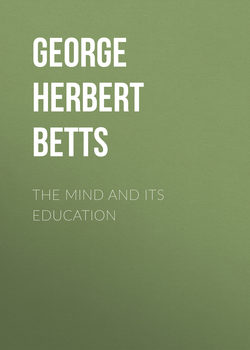Читать книгу The Mind and Its Education - George Herbert Betts - Страница 18
CHAPTER III
2. THE MIND'S DEPENDENCE ON THE EXTERNAL WORLD
ОглавлениеBut can we first see how in a general way the brain and nervous system are primarily related to our thinking? Let us go back to the beginning and consider the babe when it first opens its eyes on the scenes of its new existence. What is in its mind? What does it think about? Nothing. Imagine, if you can, a person born blind and deaf, and without the sense of touch, taste, or smell. Let such a person live on for a year, for five years, for a lifetime. What would he know? What ray of intelligence would enter his mind? What would he think about? All would be dark to his eyes, all silent to his ears, all tasteless to his mouth, all odorless to his nostrils, all touchless to his skin. His mind would be a blank. He would have no mind. He could not get started to think. He could not get started to act. He would belong to a lower scale of life than the tiny animal that floats with the waves and the tide in the ocean without power to direct its own course. He would be but an inert mass of flesh without sense or intelligence.
The Mind at Birth.—Yet this is the condition of the babe at birth. It is born practically blind and deaf, without definite sense of taste or smell. Born without anything to think about, and no way to get anything to think about until the senses wake up and furnish some material from the outside world. Born with all the mechanism of muscle and nerve ready to perform the countless complex movements of arms and legs and body which characterize every child, he could not successfully start these activities without a message from the senses to set them going. At birth the child probably has only the senses of contact and temperature present with any degree of clearness; taste soon follows; vision of an imperfect sort in a few days; hearing about the same time, and smell a little later. The senses are waking up and beginning their acquaintance with the outside world.
Fig. 5.—A Neurone from a Human Spinal Cord. The central portion represents the cell body. N, the nucleus; P, a pigmented or colored spot; D, a dendrite, or relatively short fiber,—which branches freely; A, an axon or long fiber, which branches but little.
The Work of the Senses.—And what a problem the senses have to solve! On the one hand the great universe of sights and sounds, of tastes and smells, of contacts and temperatures, and whatever else may belong to the material world in which we live; and on the other hand the little shapeless mass of gray and white pulpy matter called the brain, incapable of sustaining its own shape, shut away in the darkness of a bony case with no possibility of contact with the outside world, and possessing no means of communicating with it except through the senses. And yet this universe of external things must be brought into communication with the seemingly insignificant but really wonderful brain, else the mind could never be. Here we discover, then, the two great factors which first require our study if we would understand the growth of the mind—the material world without, and the brain within. For it is the action and interaction of these which lie at the bottom of the mind's development. Let us first look a little more closely at the brain and the accompanying nervous system.
